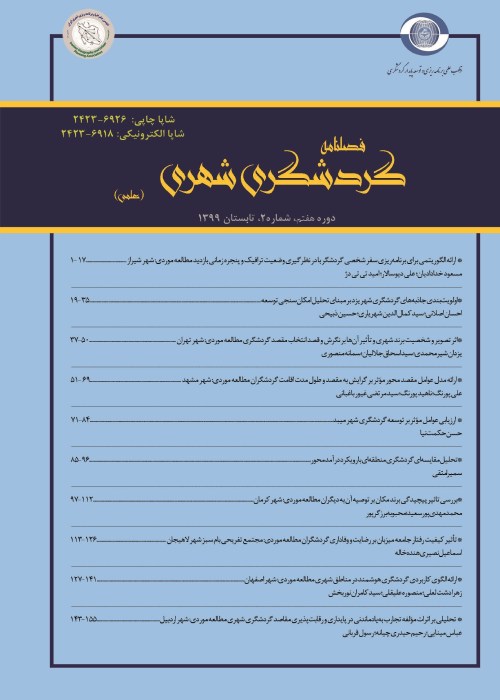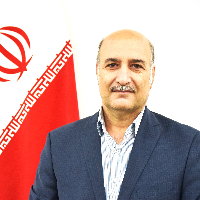Analysis of Stakeholders’ Perceptions of Tourism Impacts Sustainability in Lahijan
Nowadays, tourism is being planned as one of the strategies of economic development in many countries. Even so, tourism planning due to its dynamic and complex nature requires a comprehensive and targeted approach to development. Murphy believes that a tourism destination is located within a system that, as an intermediary, allows local residents and tourists to meet on the spot and provides tourists with various components of the tourism product in terms of accommodation, services and attractions. Understanding of stakeholders’ perception of tourism effects and their support for the tourism development process has been the subject of much research. Various models including social exchange theory, tourism life cycle and segmentation have been used to study stakeholders. In the social exchange method, the tourism host community examines the cost-benefit. In the segmentation theory, the costs and benefits of different departments or groups are examined, and in the life cycle theory, tourism evaluation is considered over time. In order to achieve sustainable tourism development in Lahijan, it is necessary to study stakeholders' perceptions of tourism development. Therefore, this research seeks two aims. First, it assesses the current state of tourism development from the perspective of stakeholders to determine its sustainability level and then examines the difference between stakeholders’ perception and its significance. Therefore, the following questions were formulated in terms of the research
1.what is the level of tourism development of Lahijan city from viewpoint of sustainability?
2.Is there a significant difference between stakeholders' perceptions (local residents, officials, investors and tourists) regarding the tourism impacts sustainability in Lahijan?
This research is applied in terms of purpose and descriptive-analytical in terms of nature and method of research. Documentary (library studies) and field (questionnaire) methods were used to collect the required data. The statistical population of this study includes local residents, managers, tourists and investors in Lahijan, which was determined by Cochran formula. Data were analyzed by using of mean and one-way analysis of variance in SPSS 25 software.
Data analysis showed that in view of economic perception, tourism development is in the mean (3/34) and above average in Lahijan city. Compared this between groups, it also showed that economic perception is at the suitable and moderate level from the standpoint of investors and managers, locals and tourists, respectively. A survey of the tourism development in terms of social also showed that the overall of the stakeholders’ perception was at an average level (3/16), but the highest level of social perception was for investors and the lowest was for managers. Local residents and tourists also rank second and third place, respectively. Physical development caused by tourism development is also in an undesirable condition (2/8) in Lahijan, as all four stakeholder groups confirmed it. Environmentally, the average situation in Lahijan is at an average level (3/07). The highest level of environmental perception was for investors (3/14) and the lowest one was for local residents (2/86). Managers and tourists are ranked second and third spots, with scores of 3/28 and 3, respectively. In general, the comparison of stakeholders in the four dimensions of tourism development in Lahijan indicated that the highest level of development is allocated to economic variables and the lowest level of development is belonged to physical ones. Social and environmental dimensions were ranked second and third, respectively. In addition, The Fisher test statistics presented that the environmental, economic and social perception of the stakeholders with 99% confidence had a significant difference, while there was no significant difference between the stakeholders. The quality of mean differences for stakeholder groups also showed that in terms of perception, investors are in high-level and managers are in low-level. Also, tourists and residents are ranked second and third. The Tukey test also indicated that there were two groups of perceptions in Lahijan. The first group includes managers, residents and tourists, while the second group consists only of investors.
Understanding stakeholders’ perceptions is one of the key factors of tourism development in a destination. Planning from top to bottom, regardless of all stakeholders has led to a lack of tourism sustainable development, especially in Iran and Lahijan city. It is widely believed that tourism sustainable development is the only way to make the most optimal use of the tourism industry. Proper and systematic planning is needed to identify the key factors of tourism sustainable development. In none of the tourism development processes in Lahijan has been provided the necessary background for the participation of local residents and tourists. While local residents, as main owners of tourism destination, play a key role in the tourism development process. So that, the consent and satisfaction of local residents to attract tourists can extend the lifecycle of a destination. The productivity and benefit of managers and investors are somewhat clear. Managers are looking to attract more investors and thus fund the city's public spending through taxation and investors are also looking for an opportunity to make more profit at a lower cost. In the meantime, tourists and especially local residents do not have the power and necessary context to participate in the tourism development process.
- حق عضویت دریافتی صرف حمایت از نشریات عضو و نگهداری، تکمیل و توسعه مگیران میشود.
- پرداخت حق اشتراک و دانلود مقالات اجازه بازنشر آن در سایر رسانههای چاپی و دیجیتال را به کاربر نمیدهد.



